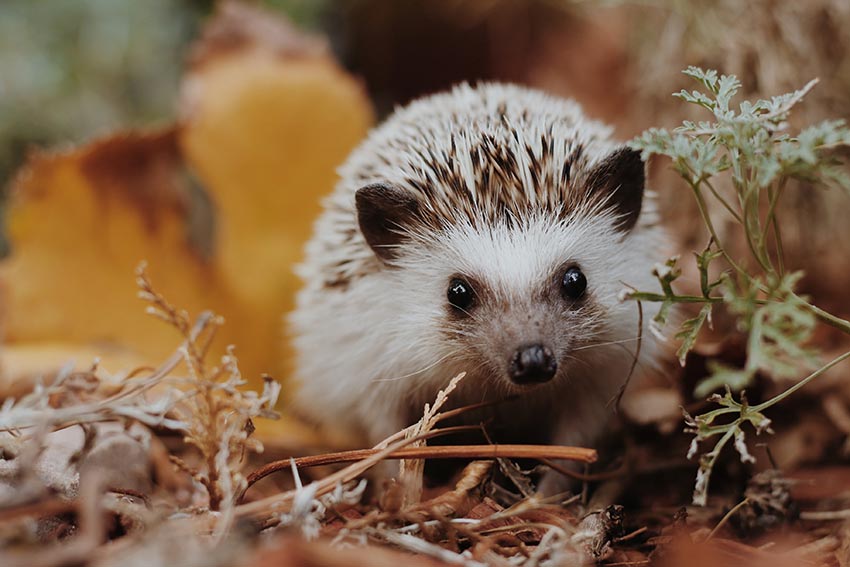Everyone loves hedgehogs, but is your garden a safe environment? Let’s find out with our Beginner’s Guide to Hedgehogs.
If you’re here, you love hedgehogs just as much as we do!
Hedgehogs are a wonderful little animal and a staple of Britain’s glorious garden wildlife, so they deserve to explore gardens in safety. That’s what we’re here for.
Here are a few dos and don’ts to make your garden hedgehog-friendly.
DO: Check long grass and hedge before trimming:

Just like us, hedgehogs love to take a nap in the grass on a sunny day. However, if they’re sleeping in long grass or around the perimeter of hedges, it can be hard to spot them when you decide it’s time to get your strimmer out.
Although many animals will hear the strimmer coming and run to safety, a hedgehog’s natural defence is to curl up in a ball, which is unfortunately no match for a sharp, spinning blade. So, whenever you decide to do a bit of trimming and tidying, check any overgrown areas for sleepy hedgehogs beforehand.
DO: Check your bonfires before lighting:

Similarly, hedgehogs love to sleep in nests of twigs and sticks, so imagine how great your pre-made bonfire is looking to them in the winter!
When making a bonfire, try to create a barrier that will stop any garden wildlife from nestling inside, and always check inside before lighting your fire. It only takes an extra moment, and it could save the life of a hedgehog who thought it looked like a great place for a nap.
DO: Create “hedgehog highways”:

Did you know that hedgehogs can travel up to a mile at night in search of food? It’s pretty impressive, and something that can be quite difficult with our garden fences blocking their paths and forcing them to take other routes, often across busy roads.
One way to avoid this is to cut 12cm by 12cm holes into the bottom of your fences, giving hedgehogs just enough room to wander in and out of your garden for sustenance.
It’s even better if you can ask your neighbours to do the same, creating a “hedgehog highway” that’s completely safe for them to travel through.
DON’T: Put down slug pellets or weed killer:

Slug pellets are a danger to any animal, including your domestic pets, as they can cause pain and even death when ingested.
To avoid this, switch to natural slug attractants, such as cucumber slices, soaked oatmeal, orange peel or leftover fruit. This means you’re able to capture and remove any slugs without putting hedgehogs (or your own pets!) at risk.
If you’re using weed killer, make sure to use it early in the day so that by the time any little hedgehogs wander into your garden, it’s already dried.
DON’T: Leave ponds and open hazards uncovered:

Ponds, drains, and any open areas that may collect water or be too high for a hedgehog to climb back out are dangerous. Although hedgehogs can swim, they will soon tire if there is not a way for them to climb back to safety and they may drown, so covering these hazards at night or adding a thick rope for them to climb back up is recommended.
DON’T: Put out bread or milk:

Many people who want to help hedgehogs in their search for food may put out bread or milk. Although their intentions are good, bread and milk can cause dehydration in hedgehogs.
If you want to create a hedgehog buffet that will help, not harm, meat-based cat or dog food is best—we’ve even heard they like turkey or chicken flavours best!
Get to know your garden wildlife!
For everything you need to know about the beautiful creatures that may wander into your garden, head to our Beginner’s Guide to Garden Wildlife, where we’ll be talking about all the things you should and shouldn’t do to create a safe space for them.


